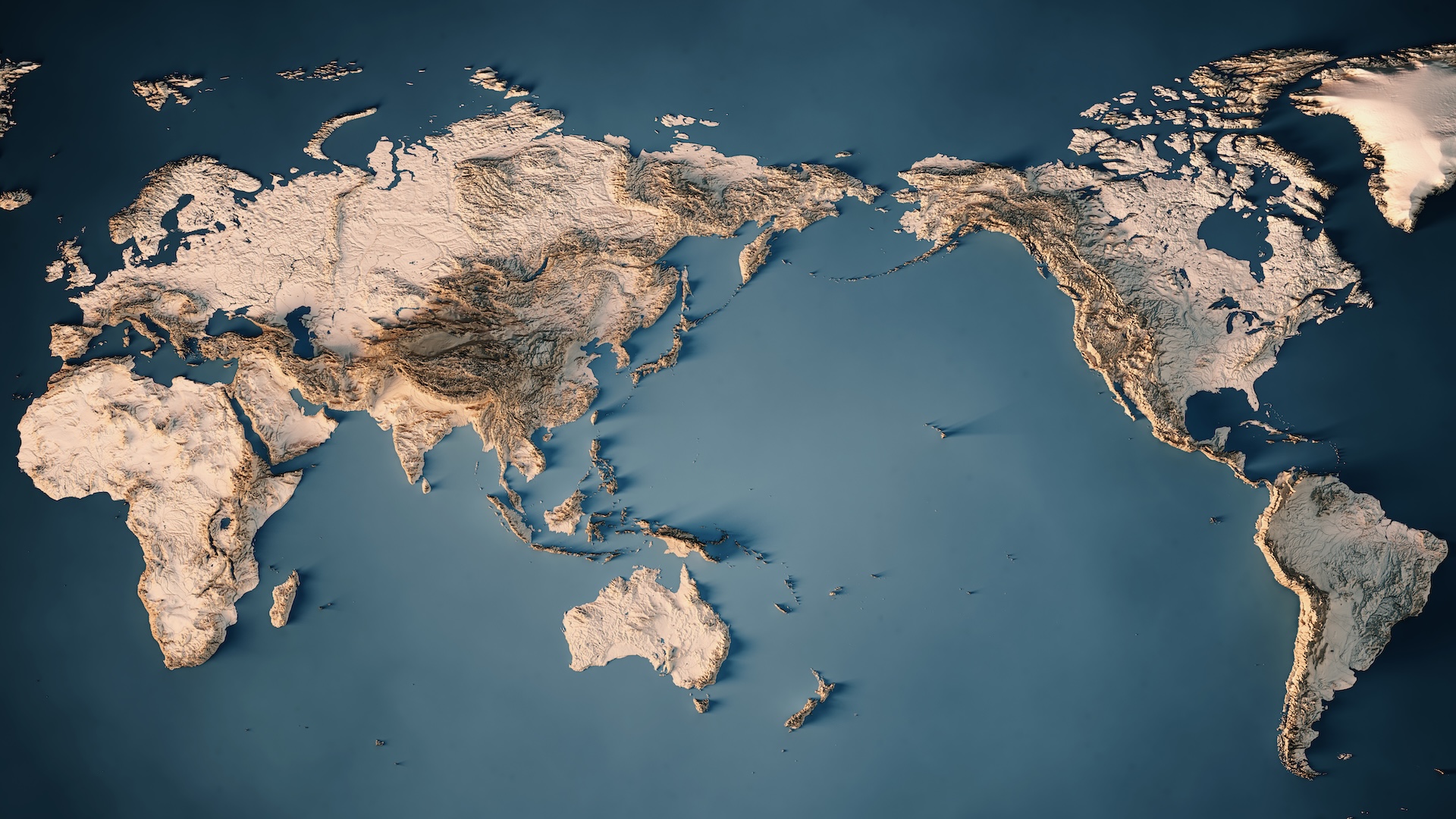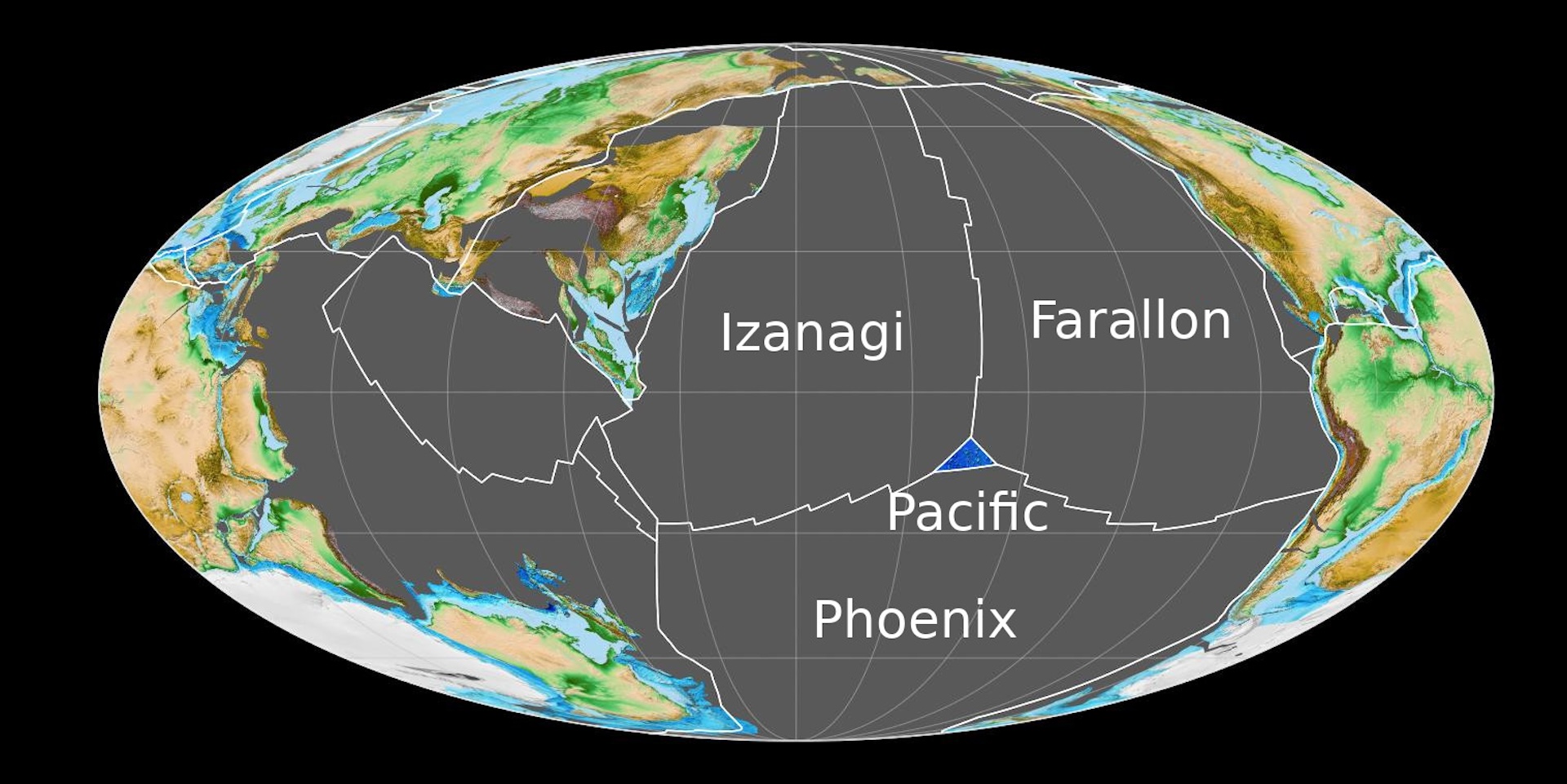Why is the Pacific Ocean so big?
Look at any world map and you'll see that the Pacific is the largest ocean. But how did it get so big?

The Pacific Ocean is by far the world's largest ocean, more than five times wider than our moon. But why is the Pacific so big?
Covering about 63 million square miles (163 million square kilometers) — more than 30% of Earth's surface — all of the world's continents could fit inside the Pacific basin, according to the National Oceanic and Atmospheric Administration (NOAA). The Pacific, which holds more than half of the free water on Earth, is also our planet's deepest water body, extending to a depth of more than 36,000 feet (11,000 meters) at Challenger Deep in the Mariana Trench, NOAA noted.
The predecessor of the Pacific Ocean was Panthalassa, or the Panthalassic Ocean, which was once Earth's only ocean. This world-spanning superocean existed when all of Earth's continental land was united in the supercontinent Pangaea.
"Panthalassa was the proto-Pacific," Susanne Neuer, founding director of the School of Ocean Futures at Arizona State University in Tempe, told Live Science. "The Pacific is essentially what remains of Panthalassa."

Sign up for our weekly Life's Little Mysteries newsletter to get the latest mysteries before they appear online.
Oceans and continents past and present rest on top of tectonic plates, the giant slabs of rock that make up Earth's rigid outer shell. These plates are regularly on the move, sometimes colliding into each other, sometimes pulling apart from one another. About 230 million years ago, such motions led Pangaea to start breaking up.
"What became North America and Eurasia began to pull apart from what became South America and Africa and Antarctica and Australia," Adriane Lam, an assistant professor of Earth sciences at Binghamton University in New York, told Live Science.
Related: Do the Pacific Ocean and the Atlantic Ocean mix?
Eventually, Pangaea split apart. In the gap that emerged between the continents, the Atlantic Ocean was born. "The Atlantic is growing about two to three centimeters each year, or about an inch," Neuer said. "That doesn't sound like much, but when you multiply that by millions of years, it's a lot."

As the continents making up Pangaea were pushed apart, Panthalassa shrunk. At the "subduction zones" where these continental plates slid over Panthalassa's oceanic plates, the "Ring of Fire" emerged, a zone infamous for volcanoes and earthquakes surrounding what is now the Pacific Ocean, Neuer explained.
A 2016 study in the journal Science Advances revealed that about 200 million years ago, the Pacific Plate, the tectonic plate that now underlies the Pacific Ocean, was born at the junction of three tectonic plates under Panthalassa, dubbed Farallon, Phoenix and Izanagi.
"The most modern analogy with what happened with the Pacific can be found today with the Afar triple junction in East Africa, where you have three plates meeting together — the Nubian, Somali and Arabian," Lam said. "But at the Afar triple junction, those plates ultimately failed to pull apart. With the Pacific triple junction, those three plates succeeded, forming the Pacific Plate."
As the Pacific Plate expanded, it displaced these three older plates. The Izanagi Plate was pushed under Asia. Nearly all of the Farallon Plate was driven beneath North America, although remnants of it remain off North America's west coast. And "the Phoenix Plate is nothing but a small piece between the southern tip of South America and the Antarctic Peninsula, the area of ocean called the Drake Passage," Lam said.
Although the Pacific is currently the world's largest ocean, "it's getting smaller" as the Atlantic gets bigger, Lam noted. However, at 41 million square miles (106 million square kilometers), the Atlantic is still much smaller than the Pacific. And a 2024 modeling study predicts that the Atlantic will start shrinking in about 20 million years.
For Lam, the Pacific Ocean is one of a kind, she said, noting its size, geological history and geological complexity. "The Pacific is the most amazing ocean basin of all."
Mariana Trench quiz: How deep is your knowledge?

You must confirm your public display name before commenting
Please logout and then login again, you will then be prompted to enter your display name.



